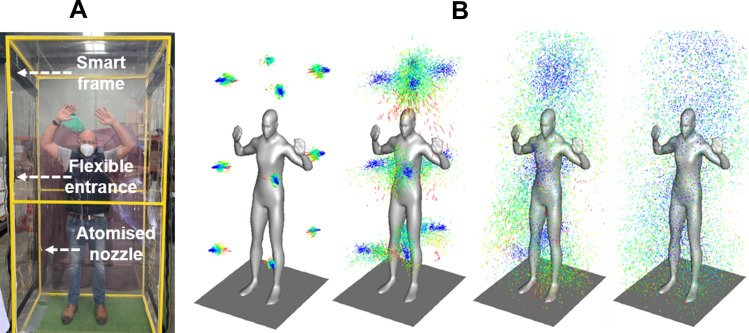
Abstract
This review is extended to cover its viricidal/bactericidal efficacy in aerosolised or sprayed form which showed an effective dose of as low as 20 ppm and the exposure duration of at least 60 s. The aerosolised application was also recommended with particle size of less than 200 μm to increase the contact with pathogens. The review also includes the safety and toxicity of HOCl with different concentrations. The review calls for more investigations into the effect of HOCl in mist and fog form on the respiratory system when transitioning through the proposed SPSC.
Conclusion
In this review on the use of stabilised hypochlorous acid (HOCl) as a potential disinfecting agent for the smart prefabricated sanitising chamber application, the current evidence on the viricidal efficacy, safety, and toxicity are presented. HOCl stabilised at the pH of 3.5–5.5 is a weak acid which interacts with structural proteins or viral materials to inactivate micro-organisms. HOCl is currently a disinfectant for SARS-CoV-2 approved by the US Environmental Protection Association under different brands. HOCl with a concentration as low as 20 ppm was found to be effective in disinfecting surfaces including porous rayon. Aerosolised or sprayed HOCl is effective in eliminating micro-strains such as Staphylococcus epidermidis after an exposure of 1 min to 20 mg/L (equivalent to 20 ppm). The safety and non-toxicity for humans and the environment, the low cost, and the flexibility of applying methods make HOCl an appropriate candidate of disinfectant for indoor settings such as offices, hospitals, and healthcare clinics. Further investigations into the effect of HOCl in mist and fog form on the skin, eyes, and respiratory system especially in special settings such as the proposed smart prefabricated sanitising chamber with presence of organic materials is recommended.
Acknowledgments
The authors would like to acknowledge the financial support from the Australian Research Council (Grant number: IC150100023 and DE290100217).


